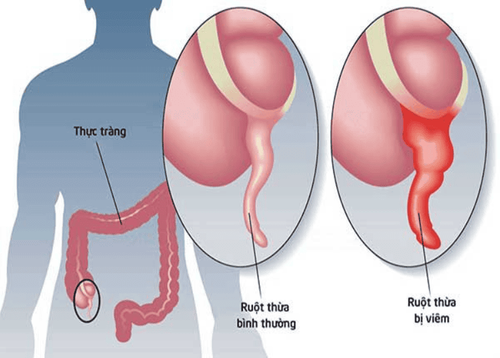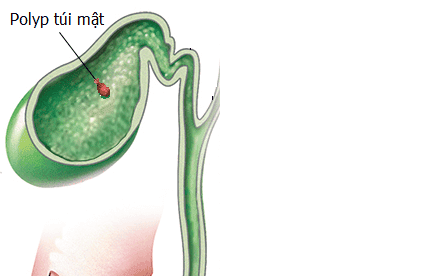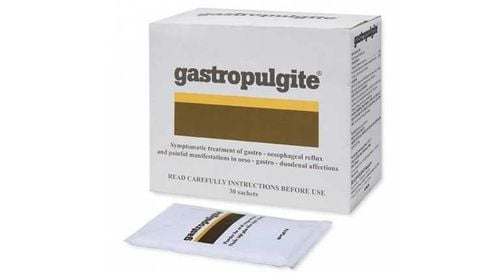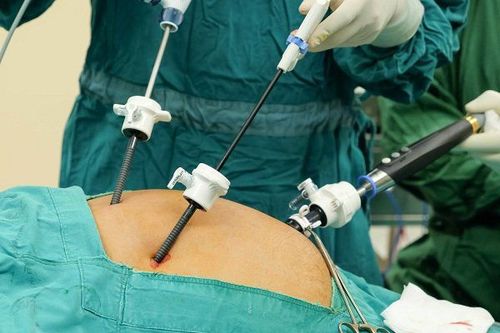This is an automatically translated article.
The article was professionally consulted by Specialist Doctor I Dong Xuan Ha - Gastroenterologist - Department of Medical Examination and Internal Medicine - Vinmec Ha Long International Hospital.Laparoscopic appendicitis is a very common surgical intervention and offers many advantages over traditional methods as before.
1. What is Laparoscopic Appendicitis?
The appendix is a narrow, finger-shaped segment of intestine located on the lower right side of the abdomen. This segment of intestine can be connected to the large intestine, but its main function is immunity to the intestinal tract. Despite this, the appendix is also very susceptible to inflammation and requires surgical intervention for urgent removal. Any delay can cause the appendix to rupture and the infection to spread throughout the abdomen.Laparoscopic appendectomy is a minimally invasive surgery to remove the appendix through a very small incision, rather than through a large incision in an open surgery. Every operation requires a lot of qualifications, skills and experience of the surgeon, in order to bring the best benefits to the patient.
2. What are the advantages of laparoscopic appendectomy?
The outcome of surgery may vary depending on the technique performed and the general condition of the patient. However, the general advantages that laparoscopic appendectomy often achieves compared to open surgery are:Less pain after surgery Shorter hospital stay Faster intestinal function recovery Quick return to work normal Achieves better aesthetics.

3. What are the criteria to be able to perform laparoscopic appendicitis surgery?
Although laparoscopic appendectomy can offer significant benefits, it is not always suitable for all patients.Cases of early, unruptured appendicitis are ideal candidates for laparoscopic surgery. However, laparoscopic appendectomy becomes more difficult to perform if infection is advanced or the inflamed appendix has ruptured. At this point, open surgery to remove the appendix through a larger incision may be indicated instead to safely remove the infected appendix in these patients.
4. What is the procedure for laparoscopic appendectomy?
Patients needing appendectomy before surgery, the patient will be given antibiotics first and then taken to surgery.The anesthesiologist will meet with the patient before the surgery to ask some health questions and especially information about the last meal. These are important because many patients with appendicitis often experience bloating due to irritation from the inflamed appendix. At the same time, the patient will be told to fast completely until the surgery is over to limit the risk of aspiration due to vomiting during anesthesia.
After anesthesia, the patient is mechanically ventilated through the endotracheal tube, the surgery will begin. Your surgeon will make two or three very small incisions near your navel and in the pubic area near your hip bone. Next, the doctor will pass a small tube containing a camera through one of the above incisions to observe and evaluate the image and structure of the appendix through an external monitor. At the same time, another tube was also inserted to inject carbon dioxide, a completely harmless gas, into the abdominal space. The volume of air will inflate the abdominal wall, making the surgical field easier to observe. Surgical instruments are also inserted through the remaining incision.
By watching on the screen, the surgeon will control, use the tools to find the appendix and clamp, remove it from the large intestine. The intestine is then removed and brought out through one of the incisions made initially.
If the appendix has ruptured, the surgeon will clean the abdomen so that the infection does not spread. After making sure the entire surgical area is clean, the surgeon will release air from the abdomen.
Surgical instruments and cameras will also be removed. The incisions will also be closed with a stapling device or some simple sutures with absorbable sutures.
Finally, the surgeon will cover the incision with a special wound dressing that the patient does not need to change the dressing in the following days. The adhesive will fall off on its own as the incision heals.
5. How to follow up after laparoscopic appendicitis?
After surgery, it is important to follow your doctor's instructions. Although many people feel that their body is back to normal after just a few days, remember that the body needs time to heal completelyPatients are encouraged to get out of bed the day after surgery and go for a light walk. This will help reduce the risk of blood clots in the legs and soreness in the muscles.
Patients can also return to most normal activities in one to two weeks after surgery, such as bathing, driving, climbing stairs, working, and even having sex.
If the incision is painful, the patient should take painkillers prescribed by the doctor instead of arbitrarily. At the same time, the patient also needs to contact the surgeon and schedule an appointment about one to two weeks after surgery, in order to evaluate the surgery in the most comprehensive way.

Persistent fever or chills Bleeding from the incision Drainage from the incision Redness of the skin around the incision Abdominal pain that does not improve Persistent nausea or vomiting Persistent cough Persistent or difficult breathing Poor appetite, skipping meals. With the advantages of laparoscopic surgery, the inflamed appendix will be cut by the surgeon and brought out through only a few very small incisions on the abdomen. Patients can recover quickly and return to normal activities as soon as possible. However, any intervention has risks, finding out and choosing a reliable and quality treatment is a way to protect comprehensive health for yourself and your family.
Please dial HOTLINE for more information or register for an appointment HERE. Download MyVinmec app to make appointments faster and to manage your bookings easily.














